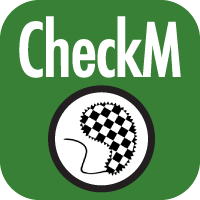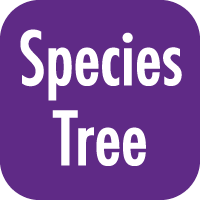The RAST algorithm was applied to annotating an existing genome: Chloroflexus sp. Y-396-1.
The sequence for this genome is comprised of 1 contigs containing 4890986 nucleotides.
The input genome has 3710 existing coding features and 139 existing non-coding features.
Input genome has the following feature types:
Non-coding assembly_gap 3
Non-coding gene 60
Non-coding misc_binding 1
Non-coding ncRNA 1
Non-coding rRNA 9
Non-coding regulatory 11
Non-coding repeat_region 4
Non-coding tRNA 49
Non-coding tmRNA 1
gene 3710
The genome features were functionally annotated using the following algorithm(s): Kmers V2; Kmers V1; protein similarity.
In addition to the remaining original 3710 coding features and 139 non-coding features, 0 new features were called, of which 0 are non-coding.
Output genome has the following feature types:
Coding gene 3710
Non-coding assembly_gap 3
Non-coding gene 60
Non-coding misc_binding 1
Non-coding ncRNA 1
Non-coding rRNA 9
Non-coding regulatory 11
Non-coding repeat_region 4
Non-coding tRNA 49
Non-coding tmRNA 1
Overall, the genes have 2555 distinct functions.
The genes include 1769 genes with a SEED annotation ontology across 1057 distinct SEED functions.
The number of distinct functions can exceed the number of genes because some genes have multiple functions.
GCF_000516515.1 succeeded!
The RAST algorithm was applied to annotating an existing genome: Chloroflexus aurantiacus J-10-fl.
The sequence for this genome is comprised of 1 contigs containing 5258541 nucleotides.
The input genome has 3853 existing coding features and 728 existing non-coding features.
Input genome has the following feature types:
Non-coding gene 137
Non-coding misc_binding 6
Non-coding ncRNA 2
Non-coding rRNA 9
Non-coding repeat_region 5
Non-coding sig_peptide 519
Non-coding tRNA 49
Non-coding tmRNA 1
gene 3853
The genome features were functionally annotated using the following algorithm(s): Kmers V2; Kmers V1; protein similarity.
In addition to the remaining original 3853 coding features and 728 non-coding features, 0 new features were called, of which 0 are non-coding.
Output genome has the following feature types:
Coding gene 3853
Non-coding gene 137
Non-coding misc_binding 6
Non-coding ncRNA 2
Non-coding rRNA 9
Non-coding repeat_region 5
Non-coding sig_peptide 519
Non-coding tRNA 49
Non-coding tmRNA 1
Overall, the genes have 2763 distinct functions.
The genes include 1653 genes with a SEED annotation ontology across 1089 distinct SEED functions.
The number of distinct functions can exceed the number of genes because some genes have multiple functions.
GCF_000018865.1 succeeded!
The RAST algorithm was applied to annotating an existing genome: Sporosarcina koreensis.
The sequence for this genome is comprised of 8 contigs containing 2912426 nucleotides.
The input genome has 2924 existing coding features and 0 existing non-coding features.
NOTE: Older input genomes did not properly separate coding and non-coding features.
Input genome has the following feature types:
Non-coding gene 93
gene 2792
pseudogene 39
The genome features were functionally annotated using the following algorithm(s): Kmers V2; Kmers V1; protein similarity.
In addition to the remaining original 2792 coding features and 132 non-coding features, 0 new features were called, of which 0 are non-coding.
Output genome has the following feature types:
Coding gene 2792
Non-coding gene 93
Non-coding pseudogene 39
Overall, the genes have 1688 distinct functions.
The genes include 1954 genes with a SEED annotation ontology across 978 distinct SEED functions.
The number of distinct functions can exceed the number of genes because some genes have multiple functions.
GCF_000826145.1 succeeded!
The RAST algorithm was applied to annotating an existing genome: Thermaerobacter subterraneus DSM 13965.
The sequence for this genome is comprised of 2 contigs containing 2888741 nucleotides.
The input genome has 2369 existing coding features and 131 existing non-coding features.
Input genome has the following feature types:
Non-coding assembly_gap 3
Non-coding gene 57
Non-coding ncRNA 3
Non-coding rRNA 7
Non-coding regulatory 10
Non-coding repeat_region 4
Non-coding tRNA 46
Non-coding tmRNA 1
gene 2369
The genome features were functionally annotated using the following algorithm(s): Kmers V2; Kmers V1; protein similarity.
In addition to the remaining original 2369 coding features and 131 non-coding features, 0 new features were called, of which 0 are non-coding.
Output genome has the following feature types:
Coding gene 2369
Non-coding assembly_gap 3
Non-coding gene 57
Non-coding ncRNA 3
Non-coding rRNA 7
Non-coding regulatory 10
Non-coding repeat_region 4
Non-coding tRNA 46
Non-coding tmRNA 1
Overall, the genes have 1429 distinct functions.
The genes include 1637 genes with a SEED annotation ontology across 847 distinct SEED functions.
The number of distinct functions can exceed the number of genes because some genes have multiple functions.
GCF_000183545.2 succeeded!
The RAST algorithm was applied to annotating an existing genome: Roseiflexus sp. RS-1.
The sequence for this genome is comprised of 1 contigs containing 5801598 nucleotides.
The input genome has 4765 existing coding features and 135 existing non-coding features.
Input genome has the following feature types:
Non-coding gene 57
Non-coding ncRNA 2
Non-coding rRNA 6
Non-coding regulatory 12
Non-coding repeat_region 9
Non-coding tRNA 48
Non-coding tmRNA 1
gene 4765
The genome features were functionally annotated using the following algorithm(s): Kmers V2; Kmers V1; protein similarity.
In addition to the remaining original 4765 coding features and 135 non-coding features, 0 new features were called, of which 0 are non-coding.
Output genome has the following feature types:
Coding gene 4765
Non-coding gene 57
Non-coding ncRNA 2
Non-coding rRNA 6
Non-coding regulatory 12
Non-coding repeat_region 9
Non-coding tRNA 48
Non-coding tmRNA 1
Overall, the genes have 3013 distinct functions.
The genes include 2091 genes with a SEED annotation ontology across 1094 distinct SEED functions.
The number of distinct functions can exceed the number of genes because some genes have multiple functions.
GCF_000016665.1 succeeded!
The RAST algorithm was applied to annotating an existing genome: Sphaerobacter thermophilus DSM 20745.
The sequence for this genome is comprised of 2 contigs containing 3993764 nucleotides.
The input genome has 3468 existing coding features and 134 existing non-coding features.
Input genome has the following feature types:
Non-coding gene 60
Non-coding ncRNA 3
Non-coding rRNA 6
Non-coding regulatory 13
Non-coding repeat_region 1
Non-coding tRNA 50
Non-coding tmRNA 1
gene 3468
The genome features were functionally annotated using the following algorithm(s): Kmers V2; Kmers V1; protein similarity.
In addition to the remaining original 3468 coding features and 134 non-coding features, 0 new features were called, of which 0 are non-coding.
Output genome has the following feature types:
Coding gene 3468
Non-coding gene 60
Non-coding ncRNA 3
Non-coding rRNA 6
Non-coding regulatory 13
Non-coding repeat_region 1
Non-coding tRNA 50
Non-coding tmRNA 1
Overall, the genes have 1839 distinct functions.
The genes include 2176 genes with a SEED annotation ontology across 961 distinct SEED functions.
The number of distinct functions can exceed the number of genes because some genes have multiple functions.
GCF_000024985.1 succeeded!
The RAST algorithm was applied to annotating an existing genome: Oscillochloris trichoides DG-6.
The sequence for this genome is comprised of 7 contigs containing 4373075 nucleotides.
The input genome has 3486 existing coding features and 263 existing non-coding features.
Input genome has the following feature types:
Non-coding assembly_gap 140
Non-coding gene 52
Non-coding ncRNA 2
Non-coding rRNA 3
Non-coding regulatory 7
Non-coding repeat_region 12
Non-coding tRNA 46
Non-coding tmRNA 1
gene 3486
The genome features were functionally annotated using the following algorithm(s): Kmers V2; Kmers V1; protein similarity.
In addition to the remaining original 3486 coding features and 263 non-coding features, 0 new features were called, of which 0 are non-coding.
Output genome has the following feature types:
Coding gene 3486
Non-coding assembly_gap 140
Non-coding gene 52
Non-coding ncRNA 2
Non-coding rRNA 3
Non-coding regulatory 7
Non-coding repeat_region 12
Non-coding tRNA 46
Non-coding tmRNA 1
Overall, the genes have 2023 distinct functions.
The genes include 2008 genes with a SEED annotation ontology across 937 distinct SEED functions.
The number of distinct functions can exceed the number of genes because some genes have multiple functions.
GCF_000152145.1 succeeded!
The RAST algorithm was applied to annotating an existing genome: Caldibacillus debilis DSM 16016.
The sequence for this genome is comprised of 40 contigs containing 3059517 nucleotides.
The input genome has 2687 existing coding features and 182 existing non-coding features.
Input genome has the following feature types:
Non-coding assembly_gap 2
Non-coding gene 74
Non-coding misc_binding 10
Non-coding misc_feature 3
Non-coding ncRNA 3
Non-coding rRNA 12
Non-coding regulatory 13
Non-coding repeat_region 6
Non-coding tRNA 58
Non-coding tmRNA 1
gene 2687
The genome features were functionally annotated using the following algorithm(s): Kmers V2; Kmers V1; protein similarity.
In addition to the remaining original 2687 coding features and 182 non-coding features, 0 new features were called, of which 0 are non-coding.
Output genome has the following feature types:
Coding gene 2687
Non-coding assembly_gap 2
Non-coding gene 74
Non-coding misc_binding 10
Non-coding misc_feature 3
Non-coding ncRNA 3
Non-coding rRNA 12
Non-coding regulatory 13
Non-coding repeat_region 6
Non-coding tRNA 58
Non-coding tmRNA 1
Overall, the genes have 1742 distinct functions.
The genes include 1780 genes with a SEED annotation ontology across 970 distinct SEED functions.
The number of distinct functions can exceed the number of genes because some genes have multiple functions.
GCF_000383875.1 succeeded!
The RAST algorithm was applied to annotating an existing genome: Catellicoccus marimammalium M35/04/3.
The sequence for this genome is comprised of 25 contigs containing 1285866 nucleotides.
The input genome has 1203 existing coding features and 120 existing non-coding features.
Input genome has the following feature types:
Non-coding gene 56
Non-coding misc_binding 2
Non-coding misc_feature 3
Non-coding ncRNA 3
Non-coding rRNA 4
Non-coding regulatory 2
Non-coding repeat_region 1
Non-coding tRNA 48
Non-coding tmRNA 1
gene 1203
The genome features were functionally annotated using the following algorithm(s): Kmers V2; Kmers V1; protein similarity.
In addition to the remaining original 1203 coding features and 120 non-coding features, 0 new features were called, of which 0 are non-coding.
Output genome has the following feature types:
Coding gene 1203
Non-coding gene 56
Non-coding misc_binding 2
Non-coding misc_feature 3
Non-coding ncRNA 3
Non-coding rRNA 4
Non-coding regulatory 2
Non-coding repeat_region 1
Non-coding tRNA 48
Non-coding tmRNA 1
Overall, the genes have 870 distinct functions.
The genes include 876 genes with a SEED annotation ontology across 550 distinct SEED functions.
The number of distinct functions can exceed the number of genes because some genes have multiple functions.
GCF_000313915.1 succeeded!
The RAST algorithm was applied to annotating an existing genome: Caldilinea aerophila DSM 14535 = NBRC 104270.
The sequence for this genome is comprised of 1 contigs containing 5144873 nucleotides.
The input genome has 4103 existing coding features and 126 existing non-coding features.
Input genome has the following feature types:
Non-coding gene 57
Non-coding ncRNA 3
Non-coding rRNA 6
Non-coding regulatory 8
Non-coding repeat_region 4
Non-coding tRNA 47
Non-coding tmRNA 1
gene 4103
The genome features were functionally annotated using the following algorithm(s): Kmers V2; Kmers V1; protein similarity.
In addition to the remaining original 4103 coding features and 126 non-coding features, 0 new features were called, of which 0 are non-coding.
Output genome has the following feature types:
Coding gene 4103
Non-coding gene 57
Non-coding ncRNA 3
Non-coding rRNA 6
Non-coding regulatory 8
Non-coding repeat_region 4
Non-coding tRNA 47
Non-coding tmRNA 1
Overall, the genes have 1736 distinct functions.
The genes include 3039 genes with a SEED annotation ontology across 948 distinct SEED functions.
The number of distinct functions can exceed the number of genes because some genes have multiple functions.
GCF_000281175.1 succeeded!
The RAST algorithm was applied to annotating an existing genome: Herpetosiphon geysericola.
The sequence for this genome is comprised of 46 contigs containing 6140412 nucleotides.
The input genome has 5288 existing coding features and 126 existing non-coding features.
Input genome has the following feature types:
Non-coding gene 52
Non-coding misc_feature 6
Non-coding ncRNA 2
Non-coding rRNA 2
Non-coding regulatory 10
Non-coding repeat_region 6
Non-coding tRNA 47
Non-coding tmRNA 1
gene 5288
The genome features were functionally annotated using the following algorithm(s): Kmers V2; Kmers V1; protein similarity.
In addition to the remaining original 5288 coding features and 126 non-coding features, 0 new features were called, of which 0 are non-coding.
Output genome has the following feature types:
Coding gene 5288
Non-coding gene 52
Non-coding misc_feature 6
Non-coding ncRNA 2
Non-coding rRNA 2
Non-coding regulatory 10
Non-coding repeat_region 6
Non-coding tRNA 47
Non-coding tmRNA 1
Overall, the genes have 2286 distinct functions.
The genes include 3362 genes with a SEED annotation ontology across 1030 distinct SEED functions.
The number of distinct functions can exceed the number of genes because some genes have multiple functions.
GCF_001306135.1 succeeded!
The RAST algorithm was applied to annotating an existing genome: bacterium JKG1 Bacteria..
The sequence for this genome is comprised of 4 contigs containing 4475263 nucleotides.
The input genome has 3924 existing coding features and 147 existing non-coding features.
Input genome has the following feature types:
Non-coding gene 62
Non-coding misc_binding 1
Non-coding ncRNA 1
Non-coding rRNA 9
Non-coding regulatory 15
Non-coding repeat_region 7
Non-coding tRNA 51
Non-coding tmRNA 1
gene 3924
The genome features were functionally annotated using the following algorithm(s): Kmers V2; Kmers V1; protein similarity.
In addition to the remaining original 3924 coding features and 147 non-coding features, 0 new features were called, of which 0 are non-coding.
Output genome has the following feature types:
Coding gene 3924
Non-coding gene 62
Non-coding misc_binding 1
Non-coding ncRNA 1
Non-coding rRNA 9
Non-coding regulatory 15
Non-coding repeat_region 7
Non-coding tRNA 51
Non-coding tmRNA 1
Overall, the genes have 1810 distinct functions.
The genes include 2882 genes with a SEED annotation ontology across 1000 distinct SEED functions.
The number of distinct functions can exceed the number of genes because some genes have multiple functions.
GCF_000526415.1 succeeded!
The RAST algorithm was applied to annotating an existing genome: Ardenticatena maritima.
The sequence for this genome is comprised of 308 contigs containing 3569367 nucleotides.
The input genome has 3215 existing coding features and 153 existing non-coding features.
Input genome has the following feature types:
Non-coding gene 66
Non-coding ncRNA 2
Non-coding rRNA 16
Non-coding regulatory 10
Non-coding repeat_region 11
Non-coding tRNA 47
Non-coding tmRNA 1
gene 3215
The genome features were functionally annotated using the following algorithm(s): Kmers V2; Kmers V1; protein similarity.
In addition to the remaining original 3215 coding features and 153 non-coding features, 0 new features were called, of which 0 are non-coding.
Output genome has the following feature types:
Coding gene 3215
Non-coding gene 66
Non-coding ncRNA 2
Non-coding rRNA 16
Non-coding regulatory 10
Non-coding repeat_region 11
Non-coding tRNA 47
Non-coding tmRNA 1
Overall, the genes have 1322 distinct functions.
The genes include 2595 genes with a SEED annotation ontology across 807 distinct SEED functions.
The number of distinct functions can exceed the number of genes because some genes have multiple functions.
GCF_001293545.1 succeeded!
The RAST algorithm was applied to annotating an existing genome: Roseiflexus castenholzii DSM 13941.
The sequence for this genome is comprised of 1 contigs containing 5723298 nucleotides.
The input genome has 4647 existing coding features and 129 existing non-coding features.
Input genome has the following feature types:
Non-coding gene 57
Non-coding ncRNA 2
Non-coding rRNA 6
Non-coding regulatory 9
Non-coding repeat_region 6
Non-coding tRNA 48
Non-coding tmRNA 1
gene 4647
The genome features were functionally annotated using the following algorithm(s): Kmers V2; Kmers V1; protein similarity.
In addition to the remaining original 4647 coding features and 129 non-coding features, 0 new features were called, of which 0 are non-coding.
Output genome has the following feature types:
Coding gene 4647
Non-coding gene 57
Non-coding ncRNA 2
Non-coding rRNA 6
Non-coding regulatory 9
Non-coding repeat_region 6
Non-coding tRNA 48
Non-coding tmRNA 1
Overall, the genes have 2964 distinct functions.
The genes include 2058 genes with a SEED annotation ontology across 1082 distinct SEED functions.
The number of distinct functions can exceed the number of genes because some genes have multiple functions.
GCF_000017805.1 succeeded!
The RAST algorithm was applied to annotating an existing genome: Thermanaerothrix daxensis.
The sequence for this genome is comprised of 6 contigs containing 3012066 nucleotides.
The input genome has 2745 existing coding features and 122 existing non-coding features.
Input genome has the following feature types:
Non-coding gene 54
Non-coding ncRNA 3
Non-coding rRNA 3
Non-coding regulatory 10
Non-coding repeat_region 4
Non-coding tRNA 47
Non-coding tmRNA 1
gene 2745
The genome features were functionally annotated using the following algorithm(s): Kmers V2; Kmers V1; protein similarity.
In addition to the remaining original 2745 coding features and 122 non-coding features, 0 new features were called, of which 0 are non-coding.
Output genome has the following feature types:
Coding gene 2745
Non-coding gene 54
Non-coding ncRNA 3
Non-coding rRNA 3
Non-coding regulatory 10
Non-coding repeat_region 4
Non-coding tRNA 47
Non-coding tmRNA 1
Overall, the genes have 1338 distinct functions.
The genes include 2094 genes with a SEED annotation ontology across 788 distinct SEED functions.
The number of distinct functions can exceed the number of genes because some genes have multiple functions.
GCF_001306145.1 succeeded!
The RAST algorithm was applied to annotating an existing genome: Carnobacterium jeotgali MS3.
The sequence for this genome is comprised of 12 contigs containing 2518244 nucleotides.
The input genome has 2348 existing coding features and 246 existing non-coding features.
Input genome has the following feature types:
Non-coding gene 109
Non-coding misc_binding 14
Non-coding misc_feature 3
Non-coding ncRNA 3
Non-coding rRNA 30
Non-coding regulatory 11
Non-coding tRNA 75
Non-coding tmRNA 1
gene 2348
The genome features were functionally annotated using the following algorithm(s): Kmers V2; Kmers V1; protein similarity.
In addition to the remaining original 2348 coding features and 246 non-coding features, 0 new features were called, of which 0 are non-coding.
Output genome has the following feature types:
Coding gene 2348
Non-coding gene 109
Non-coding misc_binding 14
Non-coding misc_feature 3
Non-coding ncRNA 3
Non-coding rRNA 30
Non-coding regulatory 11
Non-coding tRNA 75
Non-coding tmRNA 1
Overall, the genes have 1447 distinct functions.
The genes include 1583 genes with a SEED annotation ontology across 845 distinct SEED functions.
The number of distinct functions can exceed the number of genes because some genes have multiple functions.
GCF_000745125.1 succeeded!
The RAST algorithm was applied to annotating an existing genome: Anaerolinea thermophila UNI-1.
The sequence for this genome is comprised of 1 contigs containing 3532378 nucleotides.
The input genome has 3125 existing coding features and 336 existing non-coding features.
Input genome has the following feature types:
Non-coding gene 59
Non-coding ncRNA 3
Non-coding rRNA 6
Non-coding regulatory 10
Non-coding repeat_region 208
Non-coding tRNA 49
Non-coding tmRNA 1
gene 3125
The genome features were functionally annotated using the following algorithm(s): Kmers V2; Kmers V1; protein similarity.
In addition to the remaining original 3125 coding features and 336 non-coding features, 0 new features were called, of which 0 are non-coding.
Output genome has the following feature types:
Coding gene 3125
Non-coding gene 59
Non-coding ncRNA 3
Non-coding rRNA 6
Non-coding regulatory 10
Non-coding repeat_region 208
Non-coding tRNA 49
Non-coding tmRNA 1
Overall, the genes have 1662 distinct functions.
The genes include 1928 genes with a SEED annotation ontology across 808 distinct SEED functions.
The number of distinct functions can exceed the number of genes because some genes have multiple functions.
GCF_000199675.1 succeeded!
The RAST algorithm was applied to annotating an existing genome: Thermoflexus hugenholtzii JAD2.
The sequence for this genome is comprised of 78 contigs containing 3216964 nucleotides.
The input genome has 2899 existing coding features and 123 existing non-coding features.
Input genome has the following feature types:
Non-coding gene 54
Non-coding ncRNA 2
Non-coding rRNA 3
Non-coding regulatory 9
Non-coding repeat_region 6
Non-coding tRNA 48
Non-coding tmRNA 1
gene 2899
The genome features were functionally annotated using the following algorithm(s): Kmers V2; Kmers V1; protein similarity.
In addition to the remaining original 2899 coding features and 123 non-coding features, 0 new features were called, of which 0 are non-coding.
Output genome has the following feature types:
Coding gene 2899
Non-coding gene 54
Non-coding ncRNA 2
Non-coding rRNA 3
Non-coding regulatory 9
Non-coding repeat_region 6
Non-coding tRNA 48
Non-coding tmRNA 1
Overall, the genes have 1252 distinct functions.
The genes include 2325 genes with a SEED annotation ontology across 779 distinct SEED functions.
The number of distinct functions can exceed the number of genes because some genes have multiple functions.
GCF_900187885.1 succeeded!
The RAST algorithm was applied to annotating an existing genome: Carnobacterium sp. CP1.
The sequence for this genome is comprised of 2 contigs containing 2614401 nucleotides.
The input genome has 2378 existing coding features and 222 existing non-coding features.
Input genome has the following feature types:
Non-coding gene 106
Non-coding ncRNA 3
Non-coding rRNA 25
Non-coding regulatory 10
Non-coding tRNA 77
Non-coding tmRNA 1
gene 2378
The genome features were functionally annotated using the following algorithm(s): Kmers V2; Kmers V1; protein similarity.
In addition to the remaining original 2378 coding features and 222 non-coding features, 0 new features were called, of which 0 are non-coding.
Output genome has the following feature types:
Coding gene 2378
Non-coding gene 106
Non-coding ncRNA 3
Non-coding rRNA 25
Non-coding regulatory 10
Non-coding tRNA 77
Non-coding tmRNA 1
Overall, the genes have 1492 distinct functions.
The genes include 1625 genes with a SEED annotation ontology across 874 distinct SEED functions.
The number of distinct functions can exceed the number of genes because some genes have multiple functions.
GCF_001483965.1 succeeded!
The RAST algorithm was applied to annotating an existing genome: JP3_7 C3 Thermofonsia.
The sequence for this genome is comprised of 708 contigs containing 3379197 nucleotides.
The input genome has 2977 existing coding features and 44 existing non-coding features.
Input genome has the following feature types:
Non-coding gene 44
gene 2977
The genome features were functionally annotated using the following algorithm(s): Kmers V2; Kmers V1; protein similarity.
In addition to the remaining original 2977 coding features and 44 non-coding features, 0 new features were called, of which 0 are non-coding.
Output genome has the following feature types:
Coding gene 2977
Non-coding gene 44
Overall, the genes have 1245 distinct functions.
The genes include 2402 genes with a SEED annotation ontology across 772 distinct SEED functions.
The number of distinct functions can exceed the number of genes because some genes have multiple functions.
JP3_7_genome succeeded!
Some RAST tools will not run unless the taxonomic domain is Archaea, Bacteria, or Virus.
These tools include: call selenoproteins, call pyrroysoproteins, call crisprs, and call prophage phispy features.
You may not get the results you were expecting with your current domain of Unknown.
The RAST algorithm was applied to annotating an existing genome: 'Ca. Roseilinea gracile' YNP-MS-B-OTU-6, metagenome bin-6 (2.5kb). Bacteria..
The sequence for this genome is comprised of 439 contigs containing 2635638 nucleotides.
The input genome has 2329 existing coding features and 44 existing non-coding features.
Input genome has the following feature types:
Non-coding rRNA 3
Non-coding tRNA 41
gene 2329
The genome features were functionally annotated using the following algorithm(s): Kmers V2; Kmers V1; protein similarity.
In addition to the remaining original 2329 coding features and 44 non-coding features, 0 new features were called, of which 0 are non-coding.
Output genome has the following feature types:
Coding gene 2329
Non-coding rRNA 3
Non-coding tRNA 41
Overall, the genes have 1031 distinct functions.
The genes include 1887 genes with a SEED annotation ontology across 657 distinct SEED functions.
The number of distinct functions can exceed the number of genes because some genes have multiple functions.
Ca_Roseilinea_gracile_MS_genome succeeded!
The RAST algorithm was applied to annotating an existing genome: Chloroflexus sp. MS-G.
The sequence for this genome is comprised of 251 contigs containing 4770266 nucleotides.
The input genome has 3915 existing coding features and 0 existing non-coding features.
NOTE: Older input genomes did not properly separate coding and non-coding features.
Input genome has the following feature types:
Non-coding gene 53
gene 3659
pseudogene 203
The genome features were functionally annotated using the following algorithm(s): Kmers V2; Kmers V1; protein similarity.
In addition to the remaining original 3659 coding features and 256 non-coding features, 0 new features were called, of which 0 are non-coding.
Output genome has the following feature types:
Coding gene 3659
Non-coding gene 53
Non-coding pseudogene 203
Overall, the genes have 2567 distinct functions.
The genes include 1706 genes with a SEED annotation ontology across 1052 distinct SEED functions.
The number of distinct functions can exceed the number of genes because some genes have multiple functions.
Chloroflexus_sp._MS-G succeeded!
The RAST algorithm was applied to annotating an existing genome: Chloroflexus aggregans DSM 9485.
The sequence for this genome is comprised of 1 contigs containing 4684931 nucleotides.
The input genome has 3811 existing coding features and 134 existing non-coding features.
Input genome has the following feature types:
Non-coding gene 58
Non-coding ncRNA 1
Non-coding rRNA 9
Non-coding regulatory 9
Non-coding repeat_region 9
Non-coding tRNA 47
Non-coding tmRNA 1
gene 3811
The genome features were functionally annotated using the following algorithm(s): Kmers V2; Kmers V1; protein similarity.
In addition to the remaining original 3811 coding features and 134 non-coding features, 0 new features were called, of which 0 are non-coding.
Output genome has the following feature types:
Coding gene 3811
Non-coding gene 58
Non-coding ncRNA 1
Non-coding rRNA 9
Non-coding regulatory 9
Non-coding repeat_region 9
Non-coding tRNA 47
Non-coding tmRNA 1
Overall, the genes have 2650 distinct functions.
The genes include 1751 genes with a SEED annotation ontology across 1061 distinct SEED functions.
The number of distinct functions can exceed the number of genes because some genes have multiple functions.
GCF_000021945.1 succeeded!
The RAST algorithm was applied to annotating an existing genome: Ca. Roseilinea sp. NK_OTU-006.
The sequence for this genome is comprised of 117 contigs containing 3642138 nucleotides.
The input genome has 3087 existing coding features and 50 existing non-coding features.
Input genome has the following feature types:
Non-coding gene 50
gene 3087
The genome features were functionally annotated using the following algorithm(s): Kmers V2; Kmers V1; protein similarity.
In addition to the remaining original 3087 coding features and 50 non-coding features, 0 new features were called, of which 0 are non-coding.
Output genome has the following feature types:
Coding gene 3087
Non-coding gene 50
Overall, the genes have 1327 distinct functions.
The genes include 2451 genes with a SEED annotation ontology across 800 distinct SEED functions.
The number of distinct functions can exceed the number of genes because some genes have multiple functions.
Ca.RoseilNK_genome succeeded!





















